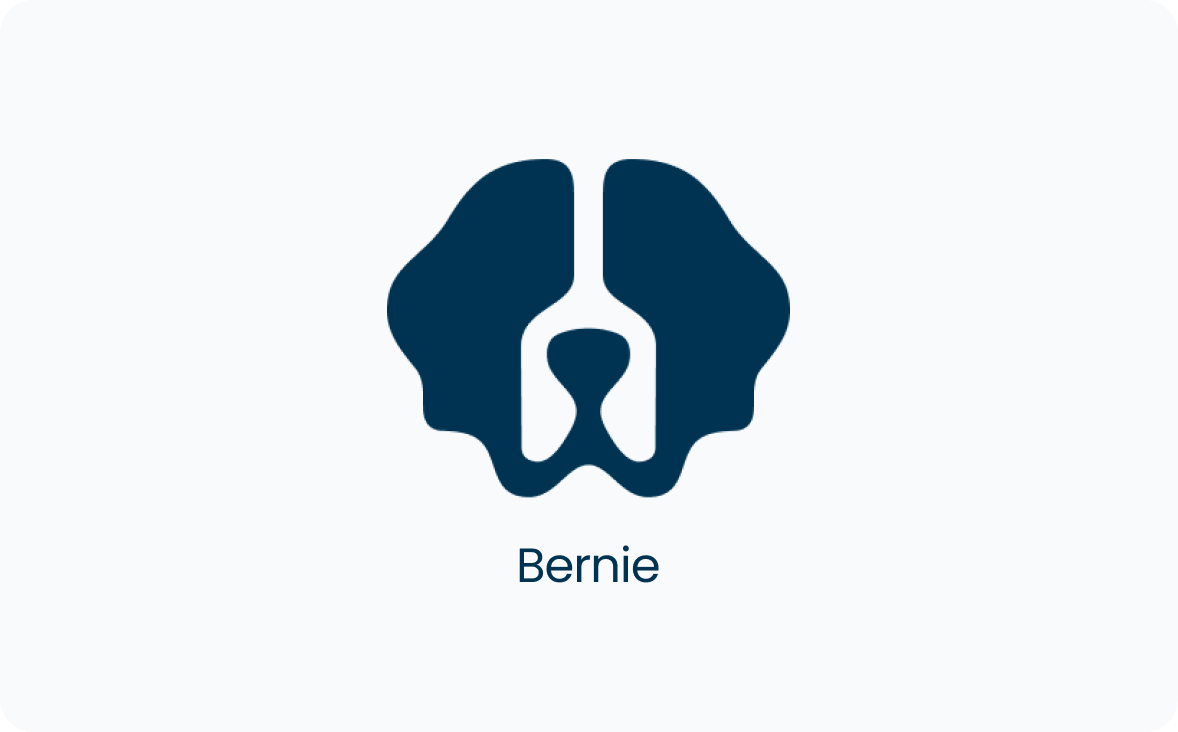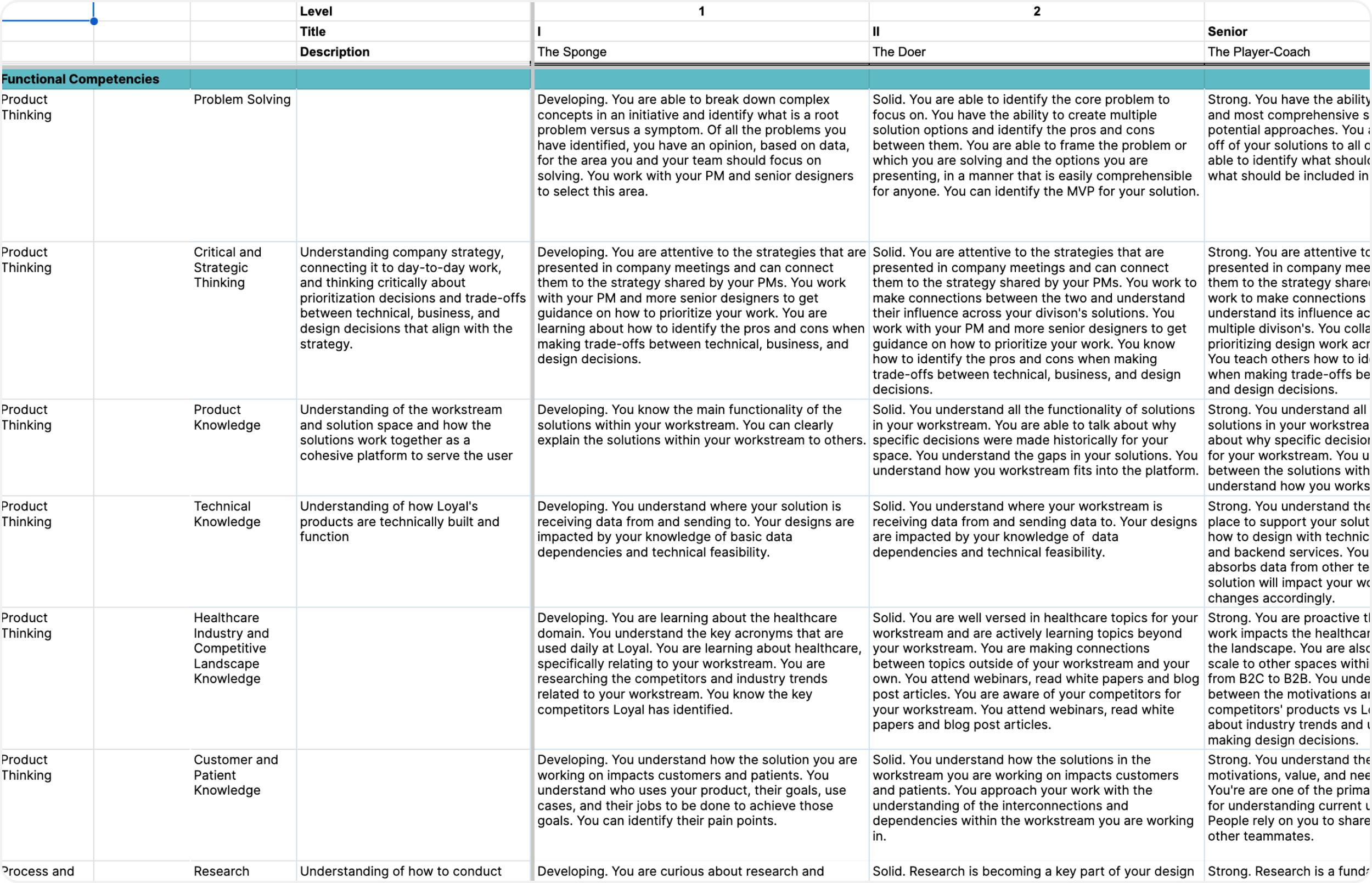Building Loyal Health’s Design Function
Context
Location and Duration: Remote, USA for 4 years
I joined Loyal Health in March of 2020 right when the global pandemic began. I moved back to the US from Quito, Ecuador in the hopes that I’d soon be able to work with my team in person. At the time, the organization was a fledging business with less than thirty people, two of them product designers. It was also a moment of complete uncertainty; at the time joining a company, let alone building a team remotely was pretty new.
My goal coming into the role was to establish a strong and (culturally) healthy design team to support the next generation of our rapidly growing business. Four years have past and our team has grown to 14 people and the org has gone through different stages of the startup lifecycle. During this time I was able to hire design managers and promote team members. I was also able to establish both a design system function and user research function.
I am truly, proud and grateful to be a part of this team.
Interviewing, hiring, and onboarding
While at Loyal I have had the opportunity to recruit, write job descriptions, set up the interview processes, and hire folks directly. After we hit a certain size, our organization was able to bring on an in house recruitment team. My team and I work closely with them to find people that will thrive on our teams and bring their own unique perspective and experience. When looking for new folks it important to me that we hire people and not skills. By focusing more on the mindset and characteristics of candidate rather than solely their technical ability, I have found that we are able to truly determine how well they would do and how happy they would be on a team.
Career growth
In June of 2020, Nieslen Norman published a study that found 89% of teams did not have a documented career ladder for designers. In previous jobs I saw first hand the difference that a career ladder made in the hiring and performance management processes. I also knew, at least anecdotally, a key thing designers look for in potential jobs opportunities for growth in their careers.
This was the first large initiative that I undertook as the Director of Product Design. It was important to me that our team had guide to make solid decisions when hiring, managing, and promoting the team as it grew. I also wanted a clear, detailed way for my team members to understand how to evaluate themselves and areas in which they could develop their skills. And it acted as a tool for my managers and myself to advocate for recognition for my team members with our executive leadership team.
This career ladder went through multiple iterations as our organization scaled. And I am product to say that it was used as a guide for other cross functional teams including Engineering and AI.
Our design rituals
Rituals are important to drive our product work and craft forward, as well nurture a bond between team members. One of my learnings as design leader is that the state of your team ebbs and flows. Things that work during one cycle of life in your org may not work in another. This is not to say you are throwing out important rituals every quarter; it’s just that you just can’t set it and forget it when it comes to the activities you do as a team.
When a “shift” happens for our team I hold reviews of our rituals and conduct retrospective like sessions to identify what rituals still provides value, what parts of them no longer works for us, and what we need to do to change. A ritual that we most recently iterated on was our design standup. We realized they were not achieving the goal we set out for them: to promote transparency across the team, know when our work overlapped, and set the week up positively with a moment of bonding. A member of the team, Val Vega, came up with a set of cards that not only allowed us to succinctly call out our work, but also encourage people to share more of their lives outside of the office. It also acts like a quick snapshot of what are peers are working on.
Our design rituals
Design Standup
Design Critiques
Design meeting day ( sharing/ continuous learning)
Monthly bonding sessions
1:1’s
Senior and Peer Mentorship meetings
Feedback channel
Friday Kudos (brainchild of Hannah Koenig)
Our design principles
There is often skepticism around establishing design principles for your products. The often can seem obvious or too general for the organization and don’t truly guide people when making decision at the detailed level. When my team collaborated on these principles our goal to show the “why” behind how our collective mindset and our approach to our work. We wanted it to be practical, be based on actual examples, and help us make decision at both a macro and micro level.
Crafting our design principles became a multi-day workshop that was interspersed with days where people were able to take there ideas back and ruminate on them. I guided us through multiple exercises that got us close, but it wasn’t after Erin McGlothlin came up with almost a specific “formula” for guiding our thoughts did we end up with a final set. By then end we were proud of the belief system we had built together.
Read our design principles here.
Our design system function
Our design system began as a grassroots effort between designers (Alex Roberts and Bhakti Shah) and front end engineers. It quickly gained excitement and momentum amongst folks at the mid and individual contributor level. It was obvious with how our platform was growing and the amount of people building our products everyday we needed buy in and funding at the executive level to create a dedicated team.
I presented to our CPO, based on our current data, the value that company wide design system would have on our overall experience and on the product organizations efficiency, as well as the time and money that could be saved. With this I was able to get a budget and hire a full time dedicated designer, Tory Birch. Tory has taken our design system leaps and bounds. Because of him we now how foundational components for a large swathe of our products, a process for development to be shared between all product teams, transparency and communication about milestones. There is also consistent feedback and input from design and engineering. Tory has been instrumental in advocating for our design system and getting buy-in for a dedicated engineer.
Design system designer Tory Birch






